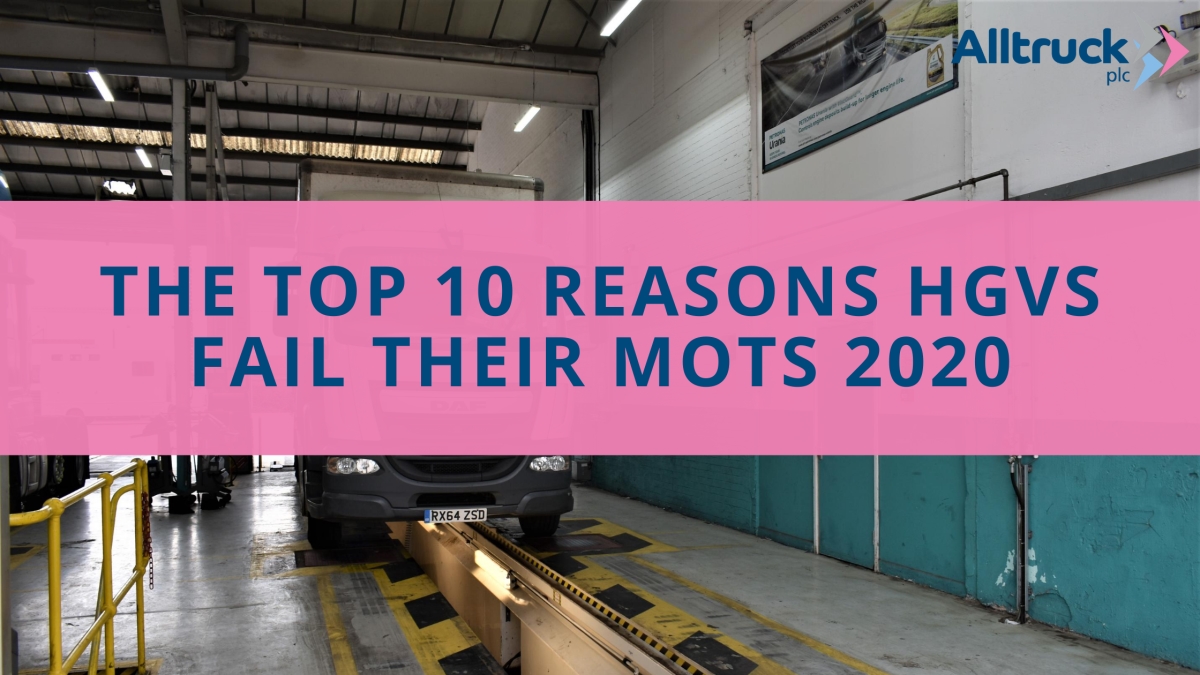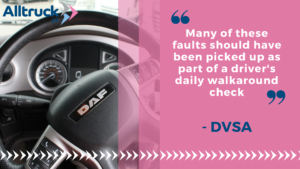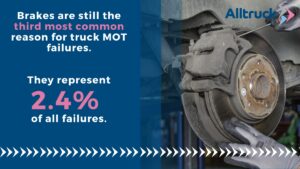
At the start of July, MOT tests for lorries, buses, and trailers recommenced after the Driver and Vehicle Standards Agency (DVSA) announced the end to the three-month hold on testing that came as a result of the Covid-19 pandemic.
Is your truck ready to go through its MOT? We have put together a list of the top 10 reasons trucks fail their annual tests and some tips on how you can prevent these from happening.
MOTs resumed on the 4th of July, but the deadline for getting your HGV tested is different for each vehicle. It is based upon when the original test was due. Vehicles with annual tests originally due in March or April 2020 will be receiving a second 3-month extension, meaning that they will not have to be tested until September 30th or October 31st.
If your truck was due an MOT in May or June, you will have to get it tested by August the 31st or September 30th. If you’re not 100% sure when your truck is due, click here to check on the GOV’s website.
Both to protect your HGV drivers (and other road users) and to avoid expensive and inconvenient MOT failures, it is worth being extra vigilant with your driver walkaround checks.
In a 2019 article, the DVSA stated that “many faults should have been picked up as part of a driver’s daily walkaround check, [and] the majority of these faults could have potentially fatal consequences for the driver and other road users.”
At Alltruck plc, we have done some research and have found out the top 10 reasons HGVs failed their MOTs in the past couple of years, as recorded by the DVSA. The following are issues to give a thought to, especially if your trucks MOT has been extended.

Here are the top 10 reasons HGVs fail their MOTs:
Lamps is now the single most common cause of fails in HGVs, having overtaken “headlamp beam aim” in 2017.
The larger your vehicle, the more lamps it is likely to have. These include headlamps, fog lamps, brake lamps, side marker lamps, registration plate lamps, forklift lights, and so on. If any of these lights are missing, the incorrect colour, positioned badly, or aren’t securely fitted, the vehicle will fail its test. However, it isn’t too difficult to check that they all work and are securely mounted.
In late 2015 headlamp beam aim made up 4.8% of all HGV fails, whilst in 2017, it went down to 3.6%. Now, as documented in September 2019, they are responsible for 3% of fails.
Motorists often complain that HGV headlights “dazzle” them, which is one of the reasons why trucks have their headlight aim checked every year. To pass, your vehicle headlights must shine onto a form and be within the correct band.
Frighteningly, brakes are still the third most common reason for truck MOT failures. Brakes represented 2.4% of failures in September last year. This means the brake systems are damaged and do not function as they should.

To prevent this, you should keep up to date with your brake inspections and check your braking system yourself regularly, whether you’re the usual driver of your vehicle or not. That way you’ll know whether anything could cause a problem long before the inspection becomes due. Especially if your test has been postponed for 6 months!
1.7% of fails are due to due to service brake performance issues. Like the other brake checks, the service brake is tested according to the type of braking system that’s used. For example, air pressure, vacuum, or hydraulic.
A simple thing that you can check is that any hydraulic fluid isn’t too old to do its job.
Steering defects affect control of the vehicle so they should be picked up when the truck is being driven. Stiffness, looseness or roughness are all things that could get you a fail.
To prevent a steering mechanism failure, ensure you have no loose bolts or brackets, and try to be aware of developing issues well in advance of the test.
When inspecting your suspension, examiners check that the vehicle’s suspension is secure and attached correctly at all points. The leaf spring systems and spring pins must be in good condition and free from defects or damage.
Overall, 1.3% of HGV’s tested last year had some issues with their suspension system. A visual check where possible is likely to identify any suspension defects.
Exhaust emissions have not only wormed there way into the top 10 reasons for MOT failures in the past four years, but they have now found themselves in the 7th spot! With the government’s target to reduce emissions by 80%, this is something that is being cracked down on.
Emissions can be more difficult to spot yourself, but in some cases, it’s obvious that a vehicle’s emissions are too high and causing a health risk to the public. For example, if there’s any visible smoke coming from the exhaust, this will be an instant failure.
Parking brake performance issues accounted for 0.8% of the test fails. To pass, the parking brake needs to have a secure mechanism and function fully and correctly when applied.
An electrical parking brake must not be damaged, inoperative or malfunctioning. This can easily be checked ahead of your MOT.
Tyres should be checked daily as part of the driver’s mandatory walkaround. However, tyres now account for 0.8% of failures, moving it up into the 9th spot.
If the tyre has exposed ply or cord, is incorrectly seated on its wheel, is worn away or has a lump, bulge or tear – it will class as a fail.
Speedometer and tachograph faults were the reason for 0.7% of MOT failure rates last year.
HGV’s must have a tachograph fitted, unless the operator is exempt from tachograph regulations, with all seals and fixtures undergoing a visual inspection. If your tachograph is damaged, not keeping to time, is in mph rather than kph, or not present at all – your vehicle will fail. Again, these things should be easy to keep an eye on in the run-up to your MOT.

We opened our ATF Lane here at Alltruck plc last month after passing the DVSA Covid-19 site compliancy inspection with flying colours.
To meet the DVSA guidelines, we now have floor stickers and signs to remind us all to keep 2 metres apart, and hand sanitiser will be found dotted around the site.
We may ask you to leave the doors of your vehicle open to help vent the cab and clean, disposable gloves will be worn by our staff when they enter the cab of your vehicle. We will also not be handing over documents directly.
Although it’s by no means ‘business as usual’, we will still provide you the friendly service, safe environment, and inspection service of the highest quality that Alltruck plc has always been proud of.
You can phone Alltruck Loughborough on 01509 276 700 to book an MOT or get in touch via the email: ATF@alltruckplc.co.uk.
We look forward to seeing you soon!